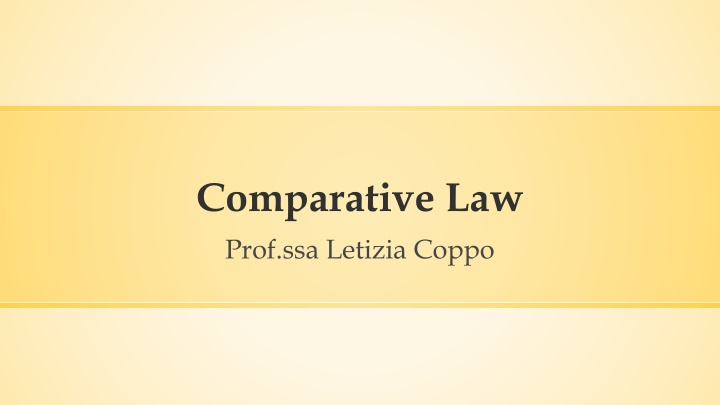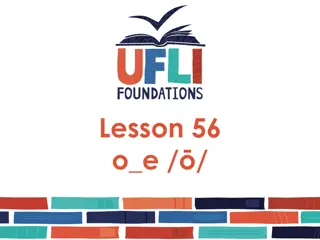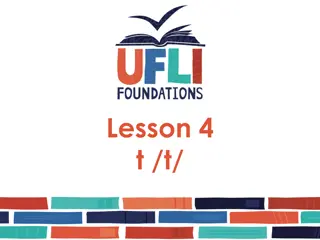
Evolution of Legal Education in the United States
Explore the transformation of legal education in the US, from Langdell's case method revolution to the shift towards legal realism. Learn about the influential figures like O. Wendell Holmes and the impact on shaping the American legal landscape. Discover the historical progression and the significance of understanding the law beyond mere logic.
Download Presentation

Please find below an Image/Link to download the presentation.
The content on the website is provided AS IS for your information and personal use only. It may not be sold, licensed, or shared on other websites without obtaining consent from the author. If you encounter any issues during the download, it is possible that the publisher has removed the file from their server.
You are allowed to download the files provided on this website for personal or commercial use, subject to the condition that they are used lawfully. All files are the property of their respective owners.
The content on the website is provided AS IS for your information and personal use only. It may not be sold, licensed, or shared on other websites without obtaining consent from the author.
E N D
Presentation Transcript
Comparative Law Prof.ssa Letizia Coppo
THE COMMON LAW TRADITION (NORTH) AMERICAN LAW
THE LAW SCHOOLS The role of US scholarship A strong, prestigious and independent legal class, capable of cooperating with judges and attorneys to the imposition of a technical control over the political process. Social engineering : US academics are typically engaged in a fruitful dialogue with political power to help it framing social policies
THE LAW SCHOOLS Langdell and the case method He was responsible for the revolution of legal education in the US, as he advocated a scientific teaching of law, on the model of German Pandectists. The key features were the drafting of case books and the elaboration of a case method.
THE LAW SCHOOLS Langdell and the case method This new method overturned the relationship between case law and scholarship: since then it has been law professors to select the most relevant and worth analysing decisions. American formalism became the pendant of German Pandettistica.
THE LAW SCHOOLS The after-Langdell period and legal realism The study of good cases is not enough to understand the system. The focus moves from the search of what the law is to the analysis of the legal process; from the study of the rules applicable to single cases to the study of the decision-making process.
THE LAW SCHOOLS O. Wendell Holmes The life of the law has not been logic: it has been experience. The felt necessities of the time, the prevalent moral and political theories, intuitions of public policy, avowed or unconscious, even the prejudices which judges share with their fellow-men, have had a good deal more to do than the syllogism in determining the rules by which men should be governed. The law embodies the story of a nation s development through many centuries, and it cannot be dealt with as if it contained only the axioms and corollaries of a book of mathematics .
THE LAW SCHOOLS O. Wendell Holmes In order to know what it is, we must know what it has been, and what it tends to become. We must alternately consult history and existing theories of legislation. But the most difficult labor will be to understand the combination of the two into new products at every stage. The substance of the law at any given time pretty nearly corresponds, so far as it goes, with what is then understood to be convenient; but its form and machinery, and the degree to which it is able to work out desired results, depend very much upon its past .
THE LAW SCHOOLS Pound: antithesis between law in the books and law in action . Llewellyn: The Common Law Tradition One of the features was the movement towards the study of disciplines other than the law (social sciences, economics ), on conviction that other scientists have provided more appropriate skills for the understanding of complexity.
THE LAW SCHOOLS Evolution of case method Case books started to reflect the new division of law into branches that were different from the traditional ones Cases are compounded and supplemented with materials, i.e. papers re-edited sometimes with innovative methods, anti- formalistic.
THE LAW SCHOOLS The decline and heritage of legal realism The approach of realists ended up being too subject to case law and reducing its contribution to the critical analysis of legal fragments without systematic significance. Reaction: some scholars attempt to remedy the shortcoming by elaborating wide-range concepts; others trash the law trying to undermine the roots of its legitimacy in the political discourse
THE LAW SCHOOLS The EconomicAnalysis of Law or Law and Economics The first stream of reaction lead to movements like the economic analysis of law or law and economics ; from realism they inherited the dialogue with other sciences, from formalism the love for conceptualisation.
THE LAW SCHOOLS The Critical Legal Studies: the second stream of reaction lead to the criticism of certain power-based institutional relationships that have an impact on the law behind the scenes of principle statements . The Law & Era: from critical race theory to the feminist jurisprudence to the gay and lesbian theory, the US witnessed the multiplication of de-constructivist theories.
LEGISLATION AND CODIFICATION The orgy of statute making : since the New Deal, the US have witnessed the proliferation of statutes both at the federal and at the state level. Statutory courses: the law schools begun to teach specific courses on statutes and their interpretation or construction.
LEGISLATION AND CODIFICATION Development of an original theory of interpretation: the combination between statutory law and the Constitution differentiated American interpretation theories from the English ones. Different approaches to the Constitution: some advocate an interpretation based on the constitutional legislator s original intent; others an evolutionary interpretation.
LEGISLATION AND CODIFICATION The different approaches to the construction of the Constitution deeply influenced statutory interpretation. Statutes are interpreted with the help of preparatory drafts and works (which are easily accessible at least as to federal legislation). This method prevails over the literal one, typical of England.
LEGISLATION AND CODIFICATION Main criterion: underlying policy. On this basis American courts can: neutralise a statute, arguing that its policy is unconstitutional (English courts would have to apply strict interpretation); provide an extensive application of the statute, on the grounds of the eadem ratio.
LEGISLATION AND CODIFICATION Codification Bentham wrote to President Madison offering him a Draft Federal Code, but the proposal was impracticable. David Dudley Field, sponsored by Justice Story, advocated the codification of common law at the State level; its philosophy: codify in one State and the others will follow .
LEGISLATION AND CODIFICATION Codification Bentham wrote to President Madison offering him a Draft Federal Code, but the proposal was impracticable. David Dudley Field, sponsored by Justice Story, advocated the codification of common law at the State level; its philosophy: codify in one State and the others will follow .
LEGISLATION AND CODIFICATION Codification Field s proposal succeeded only with reference to the code of civil procedure; later on a civil code was adopted in California and the Far West. Then codification was committed to the American Law Institute, that drafted some models. The picture is fragmentary.
LEGISLATION AND CODIFICATION Codification Criminal law is codified in the majority of states; civil law only in few, among which California. The most important general code in the US is probably the Uniform Commercial Code (UCC), that served as a model also for European uniform law initiatives.






















